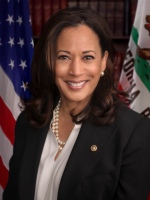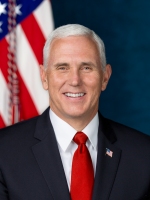
Previously published at GBH News.
Four years ago I was watching CNN as John King poked and prodded an interactive map of Florida while Wolf Blitzer looked on. King was explaining why the state was likely to go for Hillary Clinton. And then it happened — the map flipped red. Donald Trump was on his way to victory in Florida and to a narrow Electoral College win nationwide.
So it was with a deep sense of foreboding Tuesday night as I watched King and Blitzer pore over the same map. The early lead Joe Biden had built up over President Trump in that state was beginning to fade. And sure enough, Trump moved ahead in Florida while the two were talking, just as he had in 2016.
But this is not 2016. As I write this, in the early-morning hours on Wednesday following a sleepless night, the race has not yet been decided. The headline on The New York Times home page reads “Election Turns Into Nail-Biter That May Extend for Days.” Moments after I crawled out of bed and turned on the TV, a lead that Trump had maintained in Wisconsin all night suddenly went Biden’s way. The election could go in either direction, and Biden is still very much in the running.
Among those of us who are appalled by Trump, the sickening feeling we experienced last night was based entirely on Biden’s inability to break through in solidly red states that had seemed to be within his grasp. Texas was never ridin’ with Biden. Nor was Florida — not quite an all-red state, but one that has been trending increasingly Republican in recent years, a trend that has been boosted by voter suppression. Nor was Georgia (or so I thought; at the moment it’s actually trending toward Biden).
In fact, if you strip away the fantasies of a Biden landslide, the map looks very much like what we had expected, with the race coming down to the industrial states of Pennsylvania, Michigan and Wisconsin.
Last night it struck me that the only real surprise was there hadn’t been any surprises. So I was reassured to see Boston College History Professor Heather Cox Richardson confirm that judgment. In her daily newsletter, “Letters from an American,” she wrote, “Tonight, we wait, as returns from this year’s election are about what we expected. … This is the scenario we all foresaw.”
As Cox and others have pointed out, the reason that the mail-in votes are taking so long to tally in Pennsylvania, Michigan and Wisconsin is that Republicans fought tooth and nail to prevent them from being counted before the polls closed. As the liberal economist Dean Baker put it, Republican complaints about the slow pace “is pretty thick hypocrisy even for Republicans.”
CNN is talking about Trump's tweet complaining about "they" trying to steal the election. Might be worth mentioning, that the Rs were the ones who deliberately delayed the counting in MI, WI, and PA. This is pretty thick hypocrisy even for Republicans
— Dean Baker (@DeanBaker13) November 4, 2020
This is also the moment when Trump, cornered and desperate, will be at his most dangerous. Trump is attempting to capitalize, railing against the media in a middle-of-the-night speech and — as we all knew he would — falsely claiming that he’s won and threatening to take the election to the Supreme Court on some unspecified grounds.
“This is an extremely flammable situation, and the president just threw a match into it,” Fox News Anchor Chris Wallace told viewers.
In the hours and days ahead, the media must exercise all the discipline it can muster and keep reminding viewers, listeners and readers that the election isn’t over until all the ballots have been counted. We all know what happened this year — about 100 million ballots were cast early, many by mail, because of the COVID pandemic, and that has created delays and confusion. Republican leaders need to speak up for a fair election as well, but I’ve pretty much given up any hope that they’ll do the right thing.
A couple of other points.
First, Democrats must be shocked to see Hispanic voters shifting toward the Republicans. As The Texas Tribune reported, “Even as Biden performed well in large suburban counties that used to be reliably Republican, he failed to notch wide margins of victory in some critical Democratic strongholds, massively underperforming Hillary Clinton in the mostly Hispanic Rio Grande Valley. For example, Trump was leading in unofficial results in Zapata County — where Clinton won with 66% of the vote in 2016.”
Noting there were also signs that Black voters were not as monolithically with Biden as had been expected, the conservative pundit Byron York said on Fox News: “This is something the Republican Party has been trying to do for a long time.”
And yet Trump has shown in word and deed that he’s a racist, going all the way back to his earliest days as a real-estate developer. As the Black Lives Matter activist DeRay Mckesson tweeted, “No matter what happens tonight, we will have to reckon with the millions of people who chose Trump after seeing his racism, bigotry, and xenophobia over the past 4 years.” Democrats have some serious soul-searching to do as to why that’s the case.
No matter what happens tonight, we will have to reckon with the millions of people who chose Trump after seeing his racism, bigotry, and xenophobia over the past 4 years. If Trump is this wild for the first term, he will be an even more intense terror for a second term.
— deray (@deray) November 4, 2020
Second, although it’s too early to pass judgment given that millions of mail-in ballots have not yet been counted, it may be that the long-predicted polling apocalypse is upon us. A lot of observers said that four years ago, too, but the polls then really weren’t that bad. Clinton’s victory in the popular vote was within the margin of error, and Trump barely squeaked by in the Electoral College.
This time, though, it feels different — although, if you look at the final RealClearPolitics polls of battleground states, it may turn out that the numbers aren’t that far off. Even so, it wasn’t supposed to be this hard, and hopes that the Democrats would take back the Senate appear to be hanging by a thread. The wildly optimistic forecasts published by polling analysts like Nate Silver of FiveThirtyEight (see this and this) are a separate problem, and too complex to be dealt with at the moment.
For those of us who believe that Trump is a would-be authoritarian who poses a threat to American democracy, the results so far have been shocking. But we need to get out of our bubble. It looks like Biden may have just barely accomplished what he needed to do to win, which was all we could have realistically expected. He’ll win the popular vote by a lot. The Electoral College, on the other hand, is increasingly becoming a bulwark of Republican minority rule. A huge Biden win was probably never in the cards.
In the hours and days ahead, it’s important that all of us — not just Biden supporters, but Trump supporters as well — stay calm and wait for the final result to become clear.
Talk about this post on Facebook.






